Table of Contents
When it comes to installing windows, avoiding common mistakes is crucial for a successful project. Start by accurately measuring your window openings, as even minor errors can result in costly misfits. Always adhere to the manufacturer’s instructions; this is essential not only for correct installation but also for maintaining your warranty. Sealing any gaps around windows is vital to prevent air and water leaks that can compromise energy efficiency. Ensure your windows are level to guarantee smooth operation and functionality. Don’t overlook the importance of professional consultation; experts can guide you through building codes and best practices. Lastly, remember to install proper flashing and maintain a back slope for effective drainage. Follow these vital tips for a seamless window installation and enjoy long-lasting results.
Key Takeaways
- Measure window openings accurately from the inside of the jamb to avoid misordering and installation issues.
- Always follow manufacturer instructions to ensure proper installation and avoid gaps that can affect energy efficiency.
- Ensure windows are level during installation to prevent misalignment that can lead to air and water leaks.
- Properly seal gaps around windows with high-quality caulk or foam insulation to enhance energy efficiency and prevent drafts.
Measuring Window Openings Incorrectly
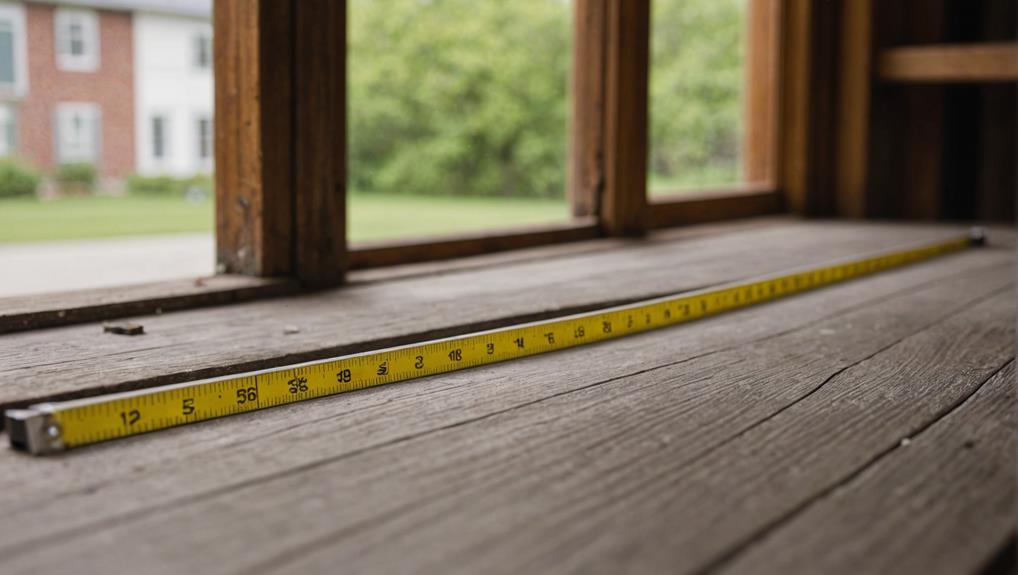
Measuring window openings incorrectly can lead to costly mistakes and frustrating installation issues. Accurate measurements are crucial because a wrong rough opening size can result in improper fitting, making your new windows ineffective. Standard sizes mightn’t apply to older homes, so you need to be especially careful.
Start by measuring from the inside of the jamb to account for wall thickness. This guarantees you leave appropriate gaps for expansion due to temperature changes. When you take these measurements, always double-check them. Even small discrepancies of just a few millimeters can lead to significant installation problems down the line.
Familiarity with window parts is fundamental, as different types of windows may require specific measurement techniques. Avoid common pitfalls by knowing what to look for and how to measure correctly.
If you’re unsure, consider consulting an expert or using professional measurement services to assure the accuracy of your window orders. This way, you can avoid unnecessary expenses and guarantee a smooth installation process.
Ignoring Manufacturer Instructions
Ignoring manufacturer instructions can lead to serious issues during window installation, impacting both performance and efficiency. Each window model comes with specific guidelines designed to prevent installation errors. When you skip these instructions, you risk creating gaps and misalignments that can severely affect energy efficiency and lead to water intrusion.
The installation manuals provide critical insights on the required tools, techniques, and necessary adjustments for achieving a proper fit. Failing to follow these guidelines not only jeopardizes the window’s performance but can also result in voiding warranties. Many manufacturers explicitly state that improper installation is a common reason for denying warranty claims.
Manufacturers invest time and resources into thoroughly testing their products, guaranteeing that their instructions reflect proven methods for achieving long-lasting performance. By adhering to manufacturer instructions, you can avoid costly mistakes, enhance your windows’ energy efficiency, and guarantee a durable installation.
Leaving Gaps Around Windows
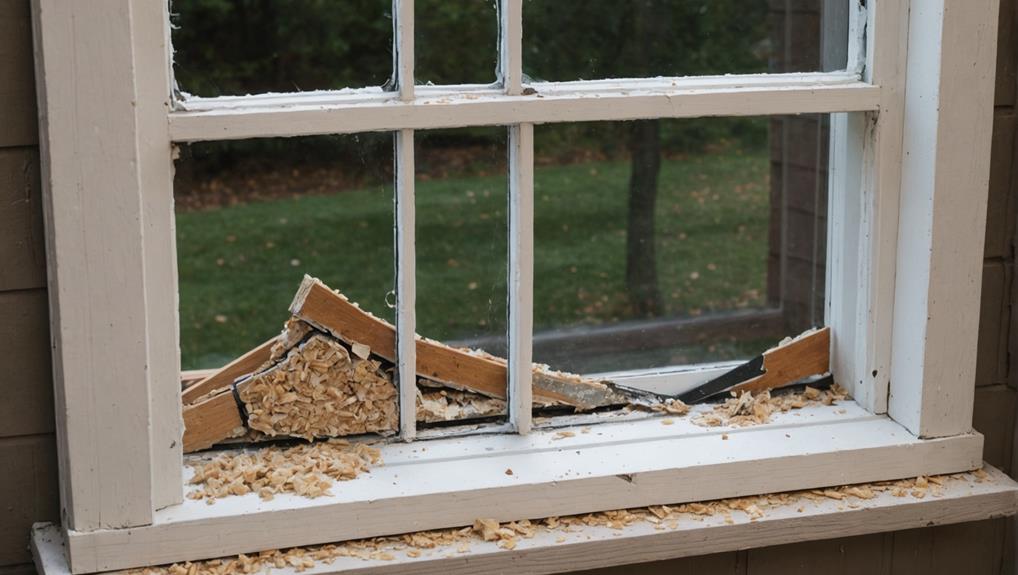
Even with careful attention to manufacturer instructions, leaving gaps around windows can create significant issues that affect both energy efficiency and the integrity of your home. These gaps can lead to air and water leaks, which compromise your heating and cooling systems, causing your energy bills to skyrocket.
To avoid this, you need to focus on proper sealing techniques during installation. Confirm that the window frame is level and square before securing it; uneven frames can create gaps that lead to operational issues, such as difficulty opening or closing the window. When you encounter gaps, fill them with high-quality caulk or foam insulation to prevent drafts and moisture intrusion.
It’s also essential to perform regular inspections post-installation. Even small openings can have a significant impact on your home’s energy efficiency. Utilizing shims during installation can help maintain correct alignment, reducing the potential for gaps around window frames.
Ordering Incorrect Window Sizes
Ordering the wrong window sizes can lead to frustrating installation issues and costly repairs, so precision in measurements is essential. When you’re installing new windows, verify you take accurate measurements to avoid misordering.
Follow these steps for a proper fit:
- Measure the Rough Opening: Always measure from inside the jamb to verify the window will fit properly.
- Know Your Window Dimensions: Familiarize yourself with the width, height, and jamb size to prevent confusion.
- Consult Manufacturer Specifications: Different brands have varying size standards, so always check their guidelines before ordering.
- Avoid Estimations: Provide exact measurements to your supplier; estimations can lead to ordering incorrect window sizes that won’t fit.
Incorrect window sizes can create gaps or poor fits, compromising energy efficiency and aesthetics.
By taking the time to verify your measurements are precise, you’ll not only make installation smoother but also enhance the overall performance of your windows.
Failing to Level Windows
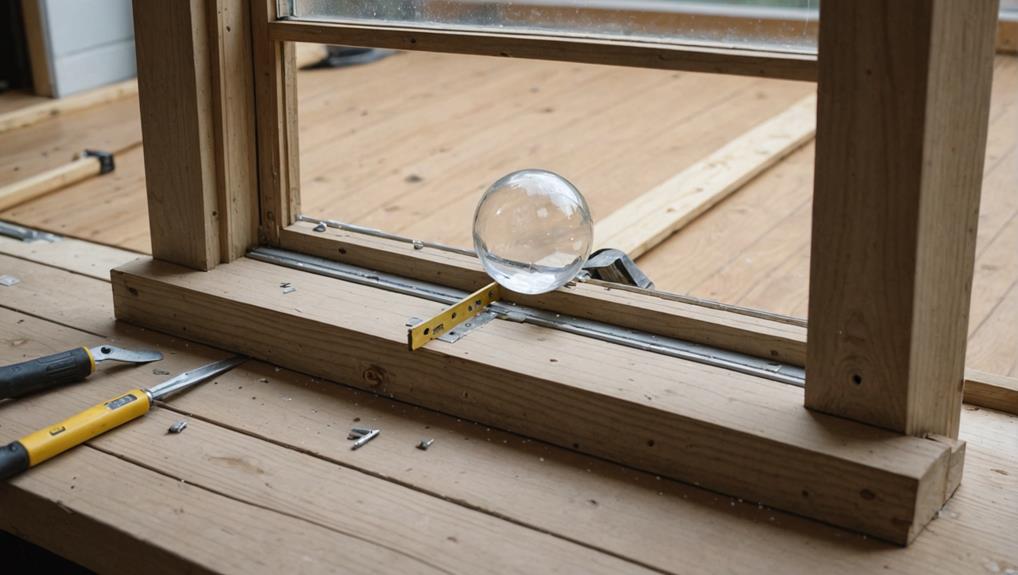
Failing to level windows during installation can lead to frustrating operational issues, making it difficult to open and close them properly. To guarantee a smooth installation, you need to check that each window is plumb, level, and square. Using a level tool is essential for achieving the correct alignment before you secure the window in place.
If you overlook this step, misalignment can result in uneven stress on the window frames, leading to gaps that allow air and water leaks. These gaps not only compromise the window’s performance but also can result in higher energy bills and potential water damage.
It’s vital to regularly check the alignment during installation. Even slight misalignments can greatly affect the window’s longevity. Once you secure the window, don’t forget to recheck the level to confirm that no adjustments are needed. Sometimes, settling can occur after the installation process, which could affect the levelness.
Misusing Spray Foam Insulation
Misusing spray foam insulation can create serious issues, just like failing to level windows during installation. One of the most common window installation mistakes is the excessive use of spray foam. This can lead to trapped moisture around window frames, causing mold growth and material deterioration.
To avoid these pitfalls, keep these points in mind:
- Limit Foam Usage: Avoid filling the entire perimeter with high-expanding spray foam; this can distort window jambs and frames.
- Leave Gaps: Make sure you leave gaps around the window for proper drainage; this helps prevent water from pooling and leaking.
- Follow Manufacturer Guidelines: Always adhere to manufacturer guidelines for foam application; neglecting this can void warranties and lead to energy inefficiencies.
- Use Proper Application Techniques: Allow adequate drying time before applying treatments; this guarantees the foam sets correctly and maintains its insulating properties.
Poor Weather-Resistant Barrier Installation
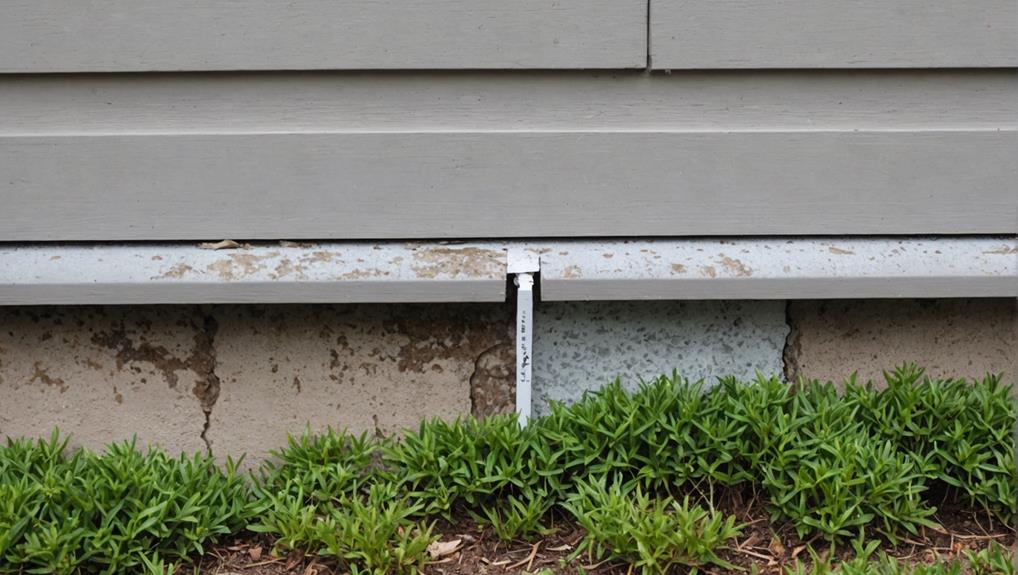
When installing windows, proper weather-resistant barrier (WRB) installation is vital to prevent moisture intrusion and protect your home from damage. A poorly installed WRB can lead to air and water leaks, which not only jeopardize your home’s integrity but also increase HVAC costs due to energy loss.
Before you apply the WRB, make certain to clear all dust and debris from the window sills. Any contaminants can hinder adhesion, compromising the effectiveness of the barrier. Additionally, use flashing tape correctly by overlapping the WRB and extending it onto the window frame. This creates a continuous moisture barrier that keeps your home dry.
It’s important to select WRB materials suitable for your local climate. Some tapes and membranes may not perform well in colder temperatures, leading to incorrect installation that invites moisture intrusion.
Neglecting Back Slope
Neglecting to create a back slope on the window sill can result in water pooling against the window, increasing the likelihood of moisture intrusion and damage to your home’s interior. A proper back slope is vital for directing rainwater away from the structure, which can prevent several issues down the line.
Here are four key reasons to prioritize a back slope:
- Prevents Water Pooling: A back slope directs water away, preventing it from accumulating on the window sill.
- Reduces Water Intrusion: Proper drainage minimizes the risk of water seeping into the wall cavity, safeguarding your home.
- Avoids Costly Repairs: Addressing water intrusion early can save you from expensive repairs due to damage or mold issues.
- Enhances Window Assembly Integrity: A well-drained window assembly maintains its structural integrity over time.
To achieve this slope, make sure the sill is angled downward by at least 1/4 inch for every foot of window width. If you missed this during framing, consider using sill wedges or sloped pans.
Don’t underestimate the importance of a proper back slope—it’s essential for protecting your home.
Skipping Professional Consultation
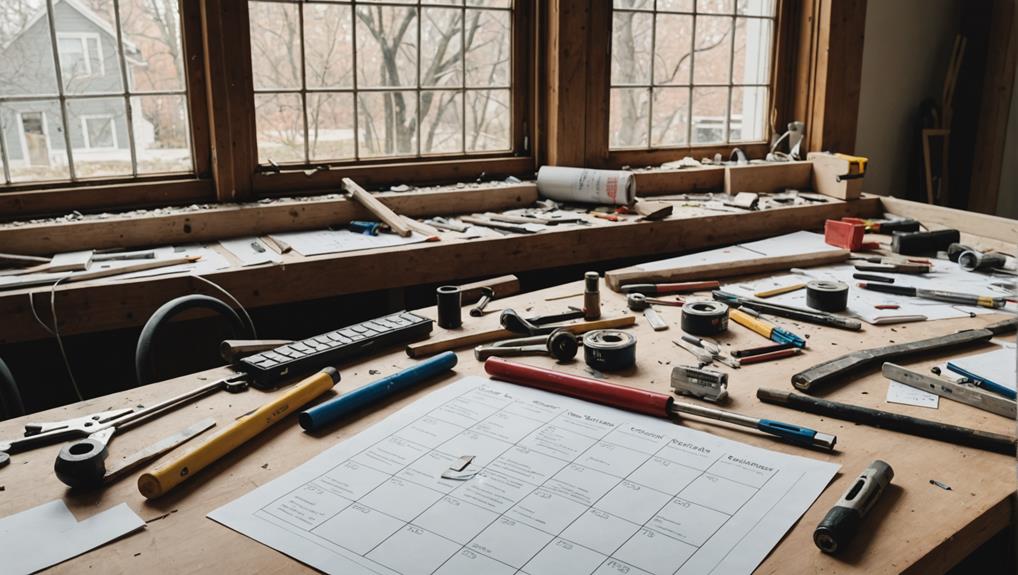
Skipping professional consultation can lead to costly mistakes in window sizing and selection that may compromise your installation. It’s a common mistake to assume you can handle everything on your own, but without expert guidance, you risk choosing the wrong size windows. You need to know the specifics of your space, including local building codes and energy efficiency ratings, which can be overwhelming.
When you consult a professional, they can help you read the manufacturers’ specifications and recommend the best materials for your climate. This knowledge enhances your windows’ long-term performance and guarantees you don’t face problems in the future. Additionally, hiring an expert can streamline the installation process, saving you time and reducing stress.
Professionals also often provide warranties on their work, giving you peace of mind and financial protection if issues arise later. So, don’t underestimate the value of a professional consultation. It might seem like an extra step, but it can save you from headaches down the line. Taking the time to consult can make all the difference in achieving a successful window installation.
Forgetting Proper Flashing Techniques
Forgetting proper flashing techniques can lead to serious water damage and costly repairs down the line. Proper flashing installation is crucial for preventing water intrusion around your windows.
Here are some critical steps to follow:
- Install Flashing Concurrently: Confirm flashing is installed at the same time as your windows. Delaying this can jeopardize the window’s integrity.
- Align Correctly: Misaligned flashing can cause leaks. It should extend at least 2 inches onto the window frame and overlap the weather-resistant barrier (WRB).
- Use Quality Materials: Invest in high-quality flashing materials. Inadequate flashing can void window warranties and lead to structural issues.
- Adopt Effective Sealing Techniques: Proper sealing techniques are essential to create a robust barrier against moisture.
Don’t forget the importance of regular inspections. These checks can help you spot potential problems before they escalate, confirming the longevity of your window installation.

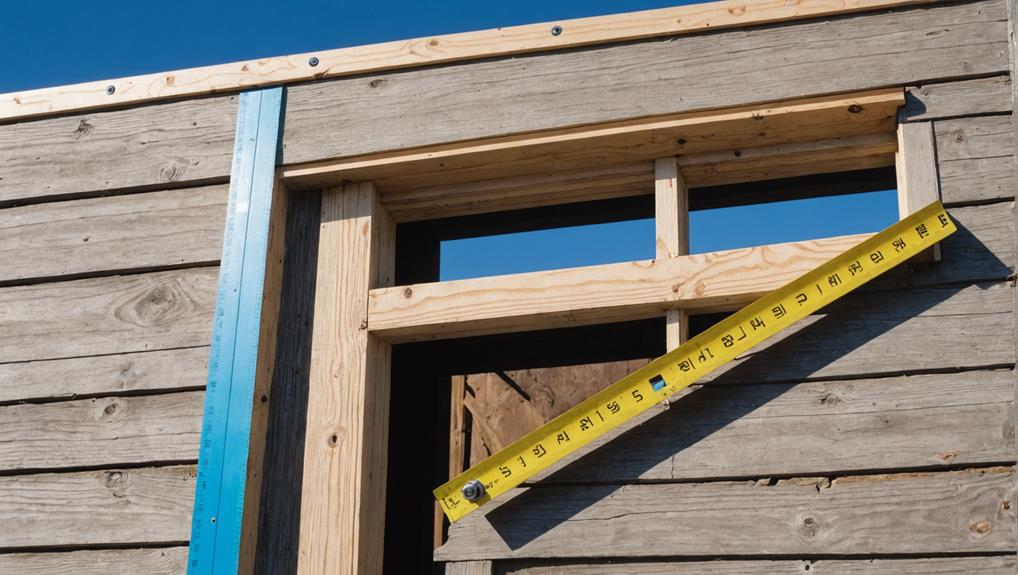
Leave a Reply